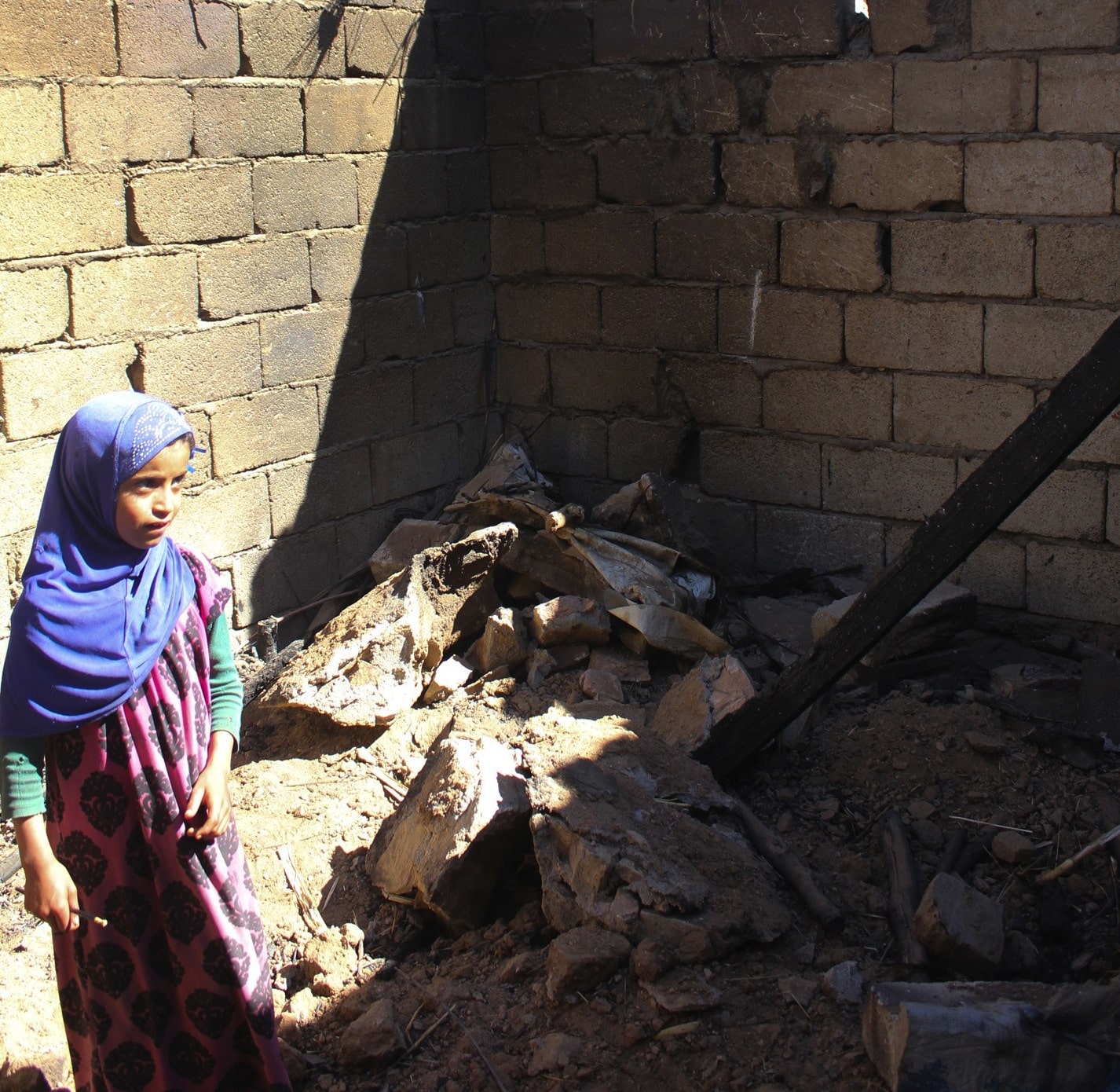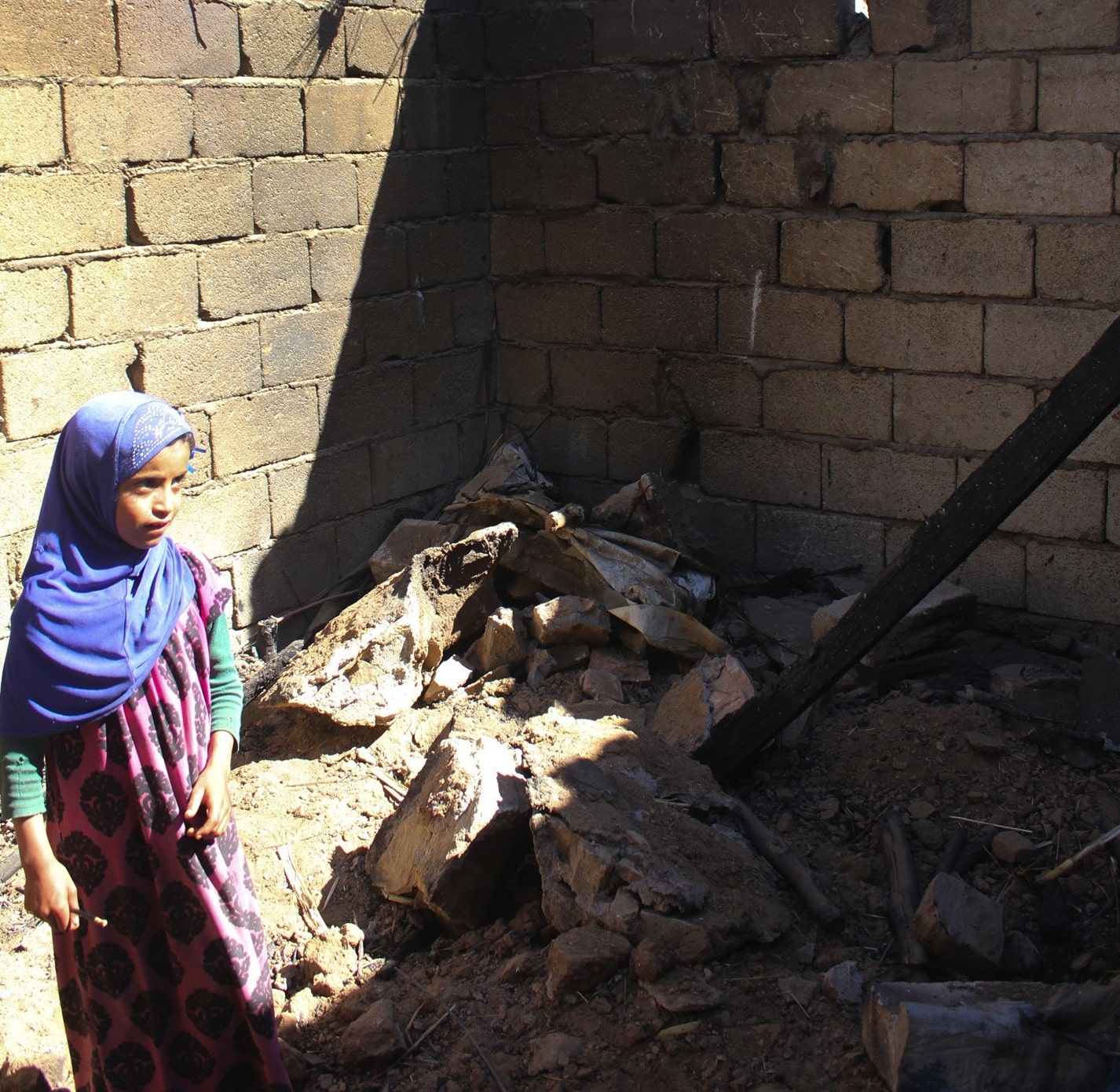On January 29, 5-year-old Sinan al Ameri was asleep with his mother, his aunt, and 12 other children in a one-room stone hut typical of poor rural villages in the highlands of Yemen. A little after 1 a.m., the women and children awoke to the sound of a gunfight erupting a few hundred feet away. Roughly 30 members of Navy SEAL Team 6 were storming the eastern hillside of the remote settlement.
According to residents of the village of al Ghayil, in Yemen’s al Bayda province, the first to die in the assault was 13-year-old Nasser al Dhahab. The house of his uncle, Sheikh Abdulraouf al Dhahab, and the building behind it, the home of 65-year-old Abdallah al Ameri and his son Mohammed al Ameri, 38, appeared to be the targets of the US forces, who called in air support as they were pinned down in a nearly hourlong firefight.
With the SEALs taking heavy fire on the lower slopes, attack helicopters swept over the hillside hamlet above. In what seemed to be blind panic, the gunships bombarded the entire village, striking more than a dozen buildings, razing stone dwellings where families slept, and wiping out more than 120 goats, sheep, and donkeys.
Three projectiles tore through the straw and timber roof of the home where Sinan slept. Cowering in a corner, Sinan’s mother, 30-year-old Fatim Saleh Mohsen, decided to flee the bombardment. Grabbing her 18-month-old son and ushering her terrified children into the narrow outdoor passageway between the tightly packed dwellings, she headed into the open. Over a week later, Sinan’s aunt Nadr al Ameri wept as she stood in the same room and recalled watching her sister run out the door into the darkness.
Nesma al Ameri, an elderly village matriarch who lost four family members in the raid, described how the attack helicopters began firing down on anything that moved. As she recounted the horror of what happened, Sinan tapped her on the arm. “No, no. The bullets were coming from behind,” the 5-year-old insisted, interrupting to demonstrate how he was shot at and his mother gunned down as they ran for their lives. “From here to here,” Sinan said, putting two fingers to the back of his head and drawing an invisible line to illustrate the direction of the bullet exiting her forehead. His mother fell to the ground next to him, still clutching his baby brother in her arms. Sinan kept running.
His mother’s body was found in the early light of dawn, the front of her head split open. The baby was wounded but alive. Sinan’s mother was one of at least six women killed in the raid, the first counterterrorism operation of the Trump administration, which also left 10 children under the age of 13 dead. “She was hit by the plane. The American plane,” explained Sinan. “She’s in heaven now,” he added with a shy smile, seemingly unaware of the enormity of what he had witnessed or, as yet, the impact of his loss. “Dog Trump,” declared Nesma, turning to the other women in the room for agreement. “Yes, the dog Trump,” they agreed.
According to White House press secretary Sean Spicer, the al Ghayil raid “was a very, very well thought out and executed effort,” planning for which began under the Obama administration back in November 2016. Although Ned Price, former National Security Council spokesperson, and Colin Kahl, the national security adviser under Vice President Biden, challenged Spicer’s account, what is agreed upon is that Trump gave the final green light over dinner at the White House on January 25. According to two people with direct knowledge, the White House did not notify the US ambassador to Yemen in advance of the operation.
The Intercept’s reporting from al Ghayil in the aftermath of the raid and the eyewitness accounts provided by residents, as well as information from current and former military officials, challenge many of the Trump administration’s key claims about the “highly successful” operation, from the description of an assault on a fortified compound — there are no compounds or walled-off houses in the village — to the “large amounts of vital intelligence” the president said were collected.
According to a current US special operations adviser and a former senior special operations officer, it was not intelligence the Pentagon was after but a key member of al Qaeda. The raid was launched in an effort to capture or kill Qassim al Rimi, the leader of al Qaeda in the Arabian Peninsula, according to the special operations adviser, who asked to remain anonymous because details behind the raid are classified.
Villagers interviewed by The Intercept rejected claims that al Rimi was present in al Ghayil, although one resident described seeing an unfamiliar black SUV arriving in the village hours before the raid. Six days after the operation, AQAP media channels released an audio statement from al Rimi, who mocked President Trump and the raid. The White House and the military have denied that the AQAP leader was the target of the mission, insisting the SEALs were sent in to capture electronic devices and material to be used for intelligence gathering. A spokesperson for CENTCOM told The Intercept the military has not yet determined whether al Rimi was in al Ghayil when the SEALs arrived.
Although some details about the mission remain unclear, the account that has emerged suggests the Trump White House is breaking with Obama administration policies that were intended to limit civilian casualties. The change — if permanent — would increase the likelihood of civilian deaths in so-called capture or kill missions like the January 29 raid.
Fair Use excerpt from The Intercept. Read the rest of the article here.
Photo Credit: Iona Craig.


